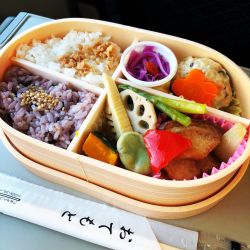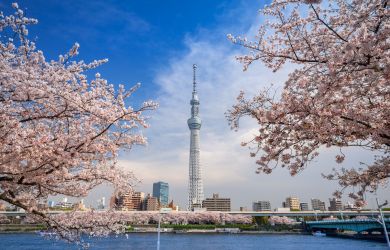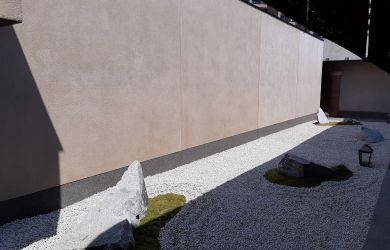
Originally published on metropolis.co.jp on January 2012

As I awake the early morning sunlight bursts through the trees overhead, my tent slowly getting warmer. I slip on some sandals and wander the short distance through the trees to a secluded strip of white sand—Ama beach. My only company is the early-bird kayakers getting ready to hit the water before the heat of the day rises. A morning swim is just the wake-up call I was hoping for, with water so clear that every stray rock or shell can be seen on the sandy seabed. I do a double take as one of the aforementioned rocks begins to move—just a couple of meters away a huge sea turtle bobs gently in the water, basking in the sun, until spotting his unexpected visitor and swimming away. So begins my first day on Zamami Island.
Just a short domestic flight from Tokyo, Zamami feels a world away from the pace of life in the metropolis. Nobody on the island is in a hurry, schoolchildren and elderly islanders greet visitors that are passing through.
See and do
Surrounding the village, Zamami is a nature lover’s paradise of jungle-covered hilltops, soaring cliffs and deserted beaches. Each viewpoint on the island is punctuated by observation decks.
Most visitors come to Zamami for the world-class snorkeling and scuba diving. The water is renowned for visibility and the abundance of coral, fish and turtles. One dive, arranged through one of the many dive centers on the island, costs around ¥6,000, but you can also snorkel straight from the beach.
Kayaks can be hired for a more adventurous exploration of the island’s coastline. A half-day tour can be organized for around ¥7,000, and a day tour for about ¥12,000. Try Okinawa Kayak, a friendly organization run by Sato. The day trip includes bouts of kayaking and snorkelling over some amazing coral spots, and a delicious lunch on the beach fresh-cooked on a camp stove. Ask him to organize some hermit crab races.
Zamami is also a prime spot for whale watching from January to March. At this time there are regular boat trips for around ¥5,000. The Zamami Whale Watching Association has spotters who watch the whales from the island’s observatories and tell the tour boats where they need to be.
EaT

Okinawan food brings together the Islands’ Japanese, Chinese, South-East Asian and US culinary influences. The most well-known dish is champuru (stir fry), with goya (bitter gourd), or alternatively with tofu, meat or papaya. Pork and fresh seafood are in abundance, as well as seaweed and locally made soba. Sweet potato is a long established Okinawan staple food, particularly for sweets and cakes. Black-sugar and sweet-bean filled rice cakes are popular Okinawan sweets, as well as donuts, with flavors including mango, pumpkin and sesame.
Try the locally brewed awamori: an Okinawan rice sake which some distilleries bottle with a habu snake to test the bravery of its drinkers. Orion is the locally brewed beer and shikuwasa (Okinawan lime) is the fruit juice to get that sugar boost on those long hot days.
Stay

The activity in Zamami is centered around the village that surrounds the port. Guesthouses, restaurants and dive centers are found along every street and alley. The village’s guesthouses charge from ¥3,000 upwards per person for a private room.
Fifteen minutes’ walk from the harbor (maps available from tourist information) is a campsite. Here you can camp in the shade of the trees for as little as ¥300, or ¥1,000 if you need to hire camping gear. The spot is steps away from a secluded white sand beach. I recommend hiring a BBQ set from the campsite and rounding the day off by cooking up some of the fresh local seafood.







